10 Pros & Cons of an Upflush Toilet (2025 Guide)
-
Pete Ortiz
- Last updated:
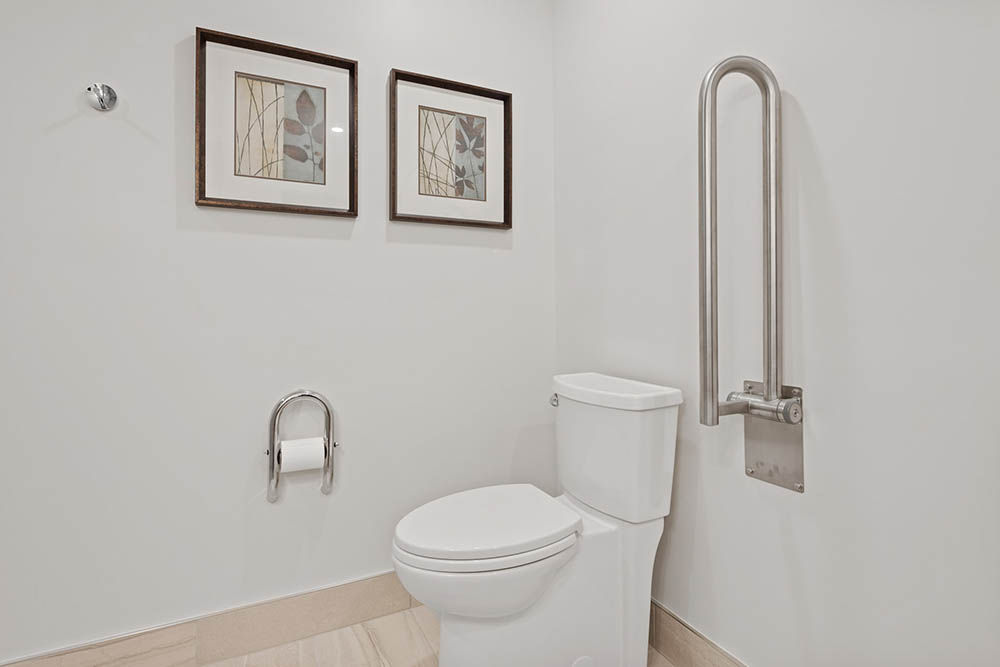
As a homeowner, one of the most vital installations you must consider is the toilet. There are many types, heights, and flushing systems, and they are all important. Keep in mind that each toilet type and flushing system has its pros and cons, so you should make your decisions based on the merits.
Currently, the most common toilet among new homeowners is the upflush toilet, and most buildings, especially in basement bathrooms, have it. It’s simpler to install and has a very efficient system. In this article, we’ll talk about the pros and cons of this toilet, where the waste goes, and how to install it.
What Is an Upflush Toilet?
On average, people spend more than 45 hours on the toilet each year. And let’s face it; if you are spending that much time on the toilet, you might want to consider its comfort and ease of functionality. Well, the up flush toilet has features that encompass these two aspects.
The main component of this toilet is a grinding pump. It shreds and grinds the toilet waste, which is flushed and sent upwards through the narrow pipe attached at the back of the septic tank. The pumps are made of stainless steel blades that liquefy the waste and turn it into a fine slurry.
This method reduces the risk of your toilet clogging and ensures the waste ends up in the septic tank in one flush.
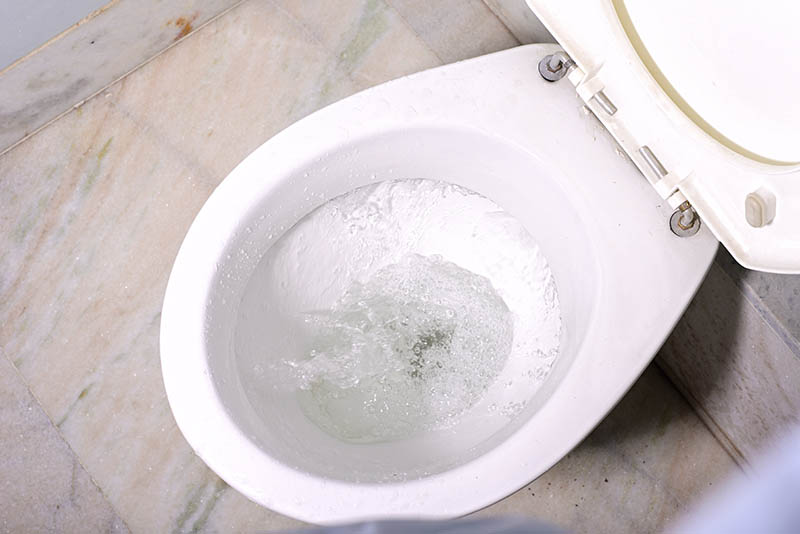
How Does the Upflush System Work?
The up flush system is pretty efficient. This is how it works:
- Once you flush the toilet, the water in the toilet rises, and this automatically turns on the grinder pump.
- The motor starts and the blades start rotating, which grinds all the waste in about 3 or 4 seconds.
- The finely ground waste, now in liquefied form, is pumped through the standard pipe, roughly 1 inch in diameter.
- Once the tank is empty and the waste is passed to the septic tank, the system is ready to be used again.
The 10 Pros & Cons of an Upflush System
Pros:
Some of the pros of installing and using an upflush system include the following:
1. Simple to Install

The installation process of this toilet system is pretty easy, and it can be installed within a short period and with minimum equipment. The installation takes a maximum of 2 days and is ready to use immediately after it’s installed.
2. It Can Be Installed in an Isolated Location
Unlike the traditional toilet system, an upflush toilet can be installed in locations far from the main drain pipes. The fact that they have their own grinder and septic tank means that it’s quite an efficient system and can work as an individual unit. Also, it can pump the waste up to 15 feet vertically and 150 feet horizontally—but it does need electricity to function.
3. Portability

An upflush system is easy to install, so you can move it and relocate it to your new house. To move it, unscrew a few bolts and move the components separately.
4. They Are More Cost Effective
Installing the upflush toilet saves you money in the long run in different ways. These toilets are cheaper to install. They also tend to be more water-friendly than traditional toilets, and plumbers also charge less to install this toilet system since the installation process is easier.
5. Low Maintenance

Maintaining an upflush toilet is easy and cheap. The only maintenance you need to do is replace the toilet pump, blades, and grinder once every 10 years. Regular maintenance includes cleaning the toilet bowl often and ensuring the waste gets to the septic tank.
6. Durability
An upflush system can last for about 10–15 years or even longer if maintained properly. The components are also quite affordable and can be easily replaced if damaged.
Cons:
Although installing the upflush toilet in your home has several benefits, it has a few cons, which include:
1. High Initial Cost

Although it might seem contradictory, it is a bit expensive to buy the upflush system, especially from a known and popular brand. Although cheaper to install, it’s way more expensive to purchase than a traditional toilet since it has more components.
2. Noise
Unlike a traditional toilet, the upflush toilet makes a lot of noise when you flush it. The noise produced by the grinder while it’s shredding the waste is enough to put off most people. This toilet may not be appropriate for a hospital, nursery, and other places that require less or no noise.
3. It Needs Electricity
The grinder and pump need electricity and cannot function in areas that don’t have a secure electricity system. Also, if many people in the household use the toilet, the electricity bills can be pretty high.
4. It Can Get Overworked
The upflush system is not recommended for a household with many people. Its pump and grinder can fail if it’s overworked and then require you to replace them.
How to Install an Upflush Toilet
Some modern upflush toilets can be installed easily and are easy to move around. If you have some experience fixing things in your home, installing one should be an easy task. You’ll need at least a day to install the toilet and a few tools.
Typically, the toilet should come with an installation plan, but if it doesn’t, you can find one online. Also, meet with your local plumbing inspector to ensure that the drainage lines can accommodate you.
- Wheelbarrow
- Spade
- Hammer
- Wrench
- Level
- Adjustable wrench
- Garden hose
- Bucket
- Screwdriver
The 10 Upflush Toilet Installation Tips
1. Check the Depth of the Upflush Unit
When purchasing a model, you need to check the distance of the sewer line from your upflush toilet. Preferably, the drainage pipe should be below the sewer line and 12 feet from the toilet. The depth of the upflush unit affects the flow and distance to the drainage pipe.
2. Make a Base for the Toilet
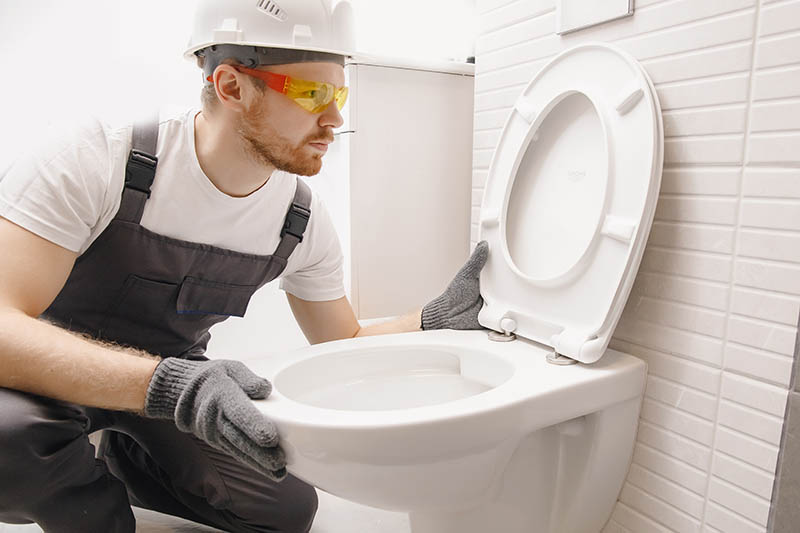
The upflush toilet unit needs to rest on a stable and level surface. The base should have a 2 by 6-inch space for the joints to fit through. You can make the base by building a frame with the same dimensions and pouring a mix of sand and concrete. Place the unit in this mixture and allow it to set.
3. Install the Support Flange
The iron support flange comes with the upflush toilet unit. Before installing it, ensure that the toilet mounting bolts are secure and set in the right position to mount the toilet.
4. Install the Toilet Pump

The toilet pump should accompany the float, float switch, and discharge tube. Assemble all of them and place the pump in the flush tank. You should also ensure the pump works before sealing the tank. Proceed by attaching the garden hose to the water supply and filling the tank through the flange hole.
5. Drain the Extra Water
If you filled your tank over the required limit, you’d need to discharge the extra water before you proceed. To do this, connect the discharge to a drainpipe and place the other end in an empty bucket. Start the pump; the water should discharge through the pipe and into the empty bucket.
6. Install the Vent Pipe
Before installing the vent pipe, insert the rubber flange provided. You can use liquid soap or baby oil if it’s a tight fix. After installing the vent pipe, run the vent to the main stack and check to see if it’s secure.
7. Install the Backflow Device
Installing a backflow device in your system will prevent the wastewater from flowing back into the unit. You can connect a PVC drainpipe to the discharge unit and run it to the house’s drain to act as a backflow device.
8. Connect the Remaining Pipes
You need to connect the remaining pipes that lead to the main drainage pipe. Ensure that the pipes don’t leak by applying glue or wax around the edges. After that, install the subfloor without puncturing the pipes and tank.
9. Install the Toilet
After completing the following steps, install the access panel, followed by the toilet, and let the bowl rest on the upflush unit.
10. Connect the Additional Features
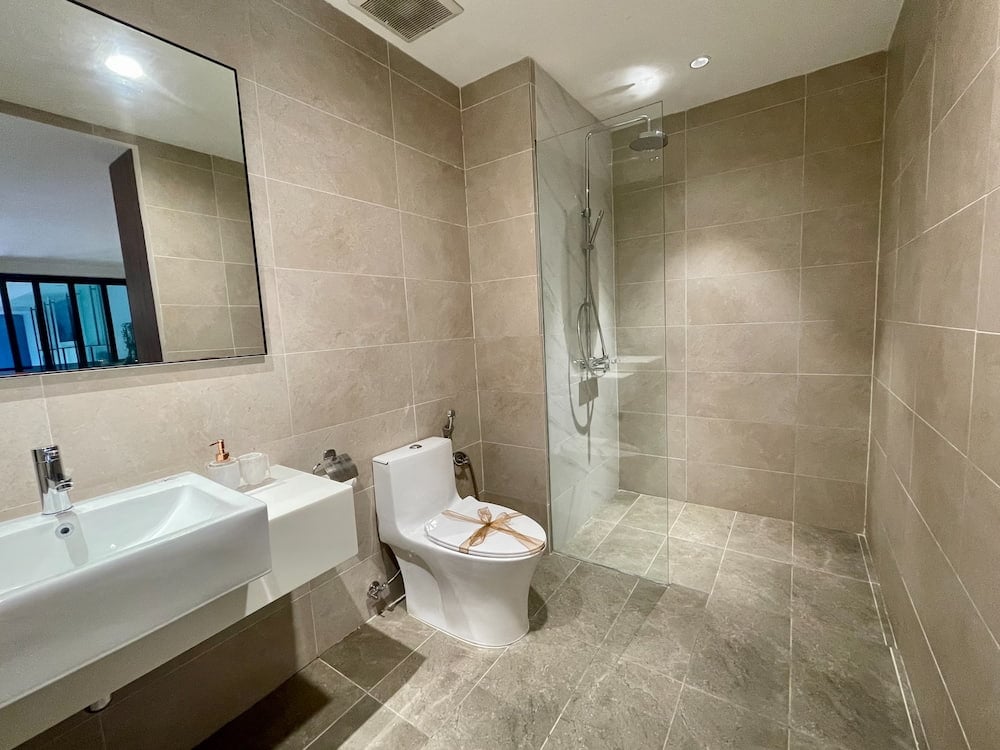
You can connect additional features to your upflush systems, such as a tub or a sink. The drain pipes for these features can also be connected to the same upflush unit.
The sink is easy to install since it’s level with the upflush system; the tub, on the other hand, may cause a significant challenge since it’s at a lower level. You can fix this issue by raising it by building a concrete base for it to rest.
How to Clean an Upflush Toilet
Cleaning the outside of an upflush system is the same as cleaning a traditional toilet. This includes scrubbing it to remove dirty streaks, spots, and splashes. Cleaning the pump and the grinder, however, is completely different.
To clean these two components, ensure that you first turn off the power to avoid injury. This is because the blades may start turning as you clean the grinder, which can cause significant damage depending on how sharp they are. Depending on the model, the switch is located behind the toilet unit or tank.
After turning off the power, open the tank, drain all the water using a hose pipe and pour liquid soap. Scrub all the exposed parts; you can detach the components and clean them individually if you don’t clean them often.
To clean the toilet bowl, pour the cleaner into it and let it sit for 20 minutes before scrubbing with a toilet brush. You can also use the descaler instead. Next, turn on the power again and allow the cleaner to get into the grinder. Flush the toilet after 2–3 hours.
Don’t use the toilet during this period to allow the cleaner to decompose and break up all the deposits inside the unit.
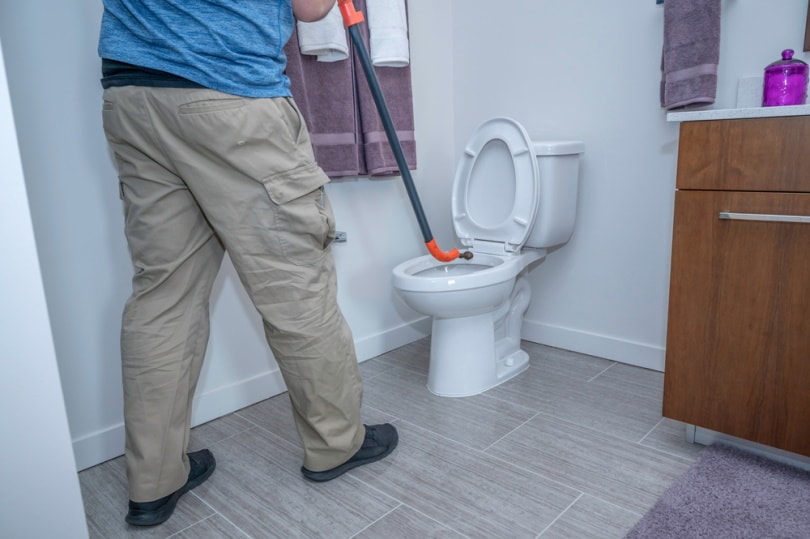
Conclusion
If you’ve never installed other appliances in your house, it would be wise to hold off on installing an upflush toilet. A badly installed toilet can create unsanitary conditions or lead to flooding in the bathroom if the pipes are not connected well. It can also lead to clogging.
Although some plumbers don’t know how to install an upflush system, you can ask your distributor for recommendations. You can check the reviews on their page to pick the right plumber for the job. The average charge for installing this toilet is about $950, which is cheaper than installing a traditional toilet.
Featured Image Credit: Point3D Commercial Imaging Ltd., Unsplash
Contents


